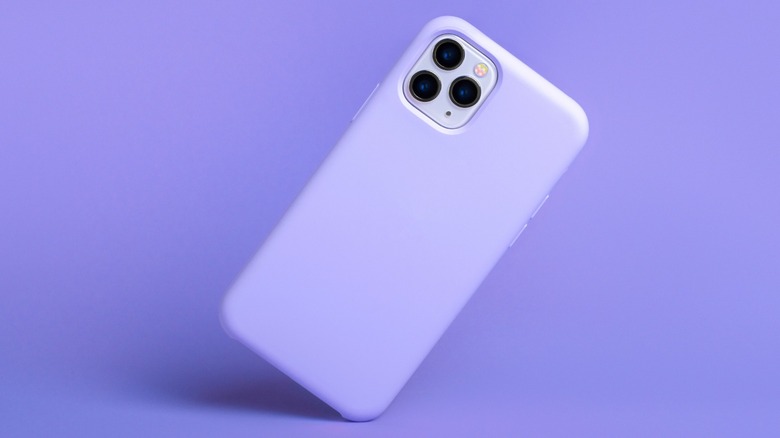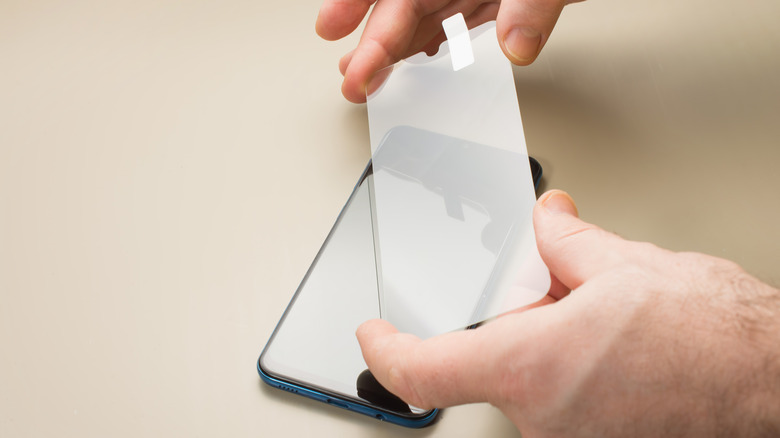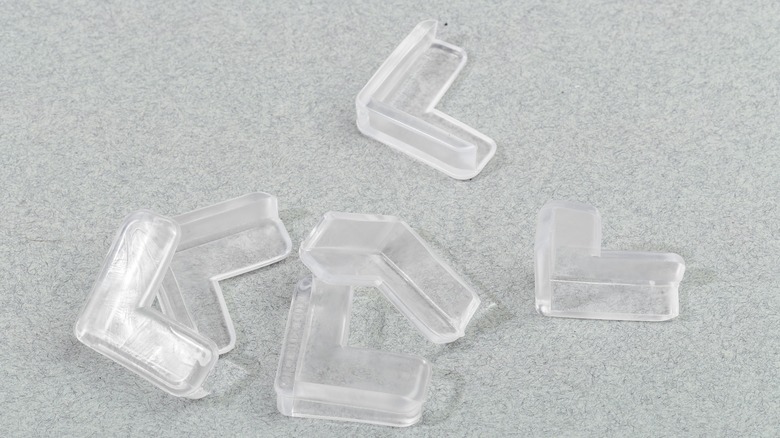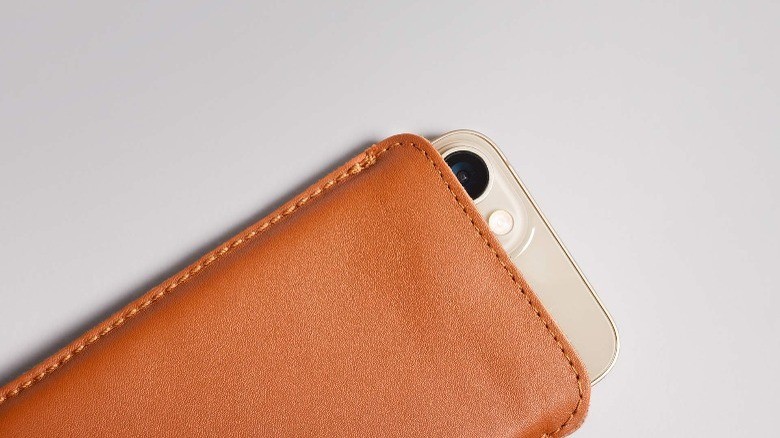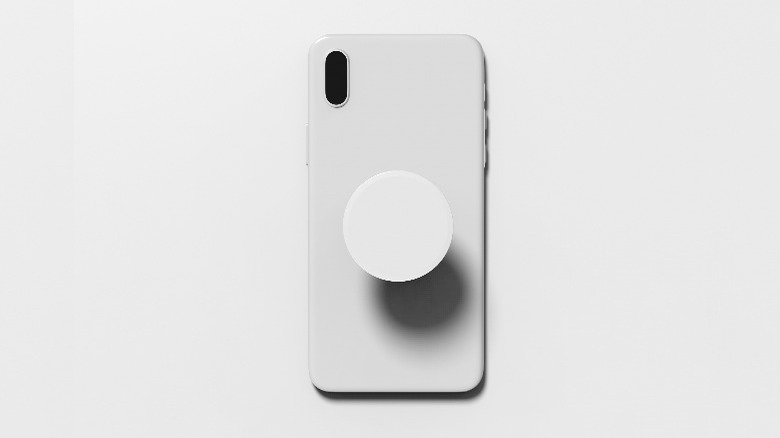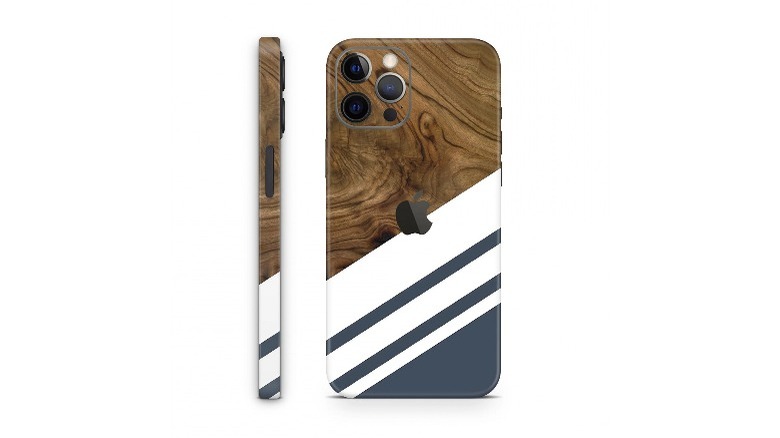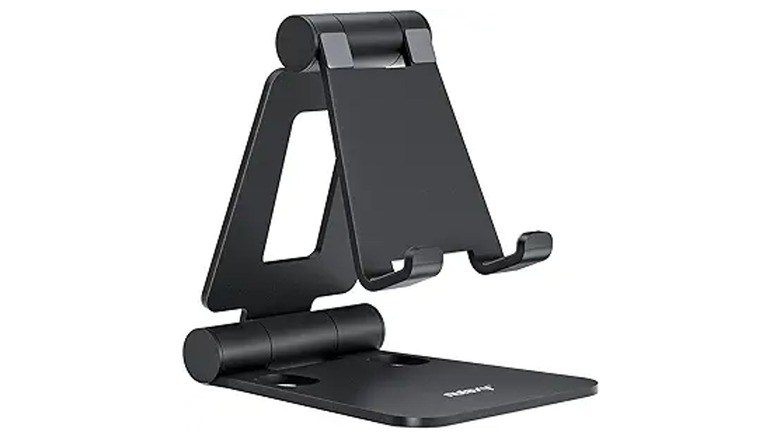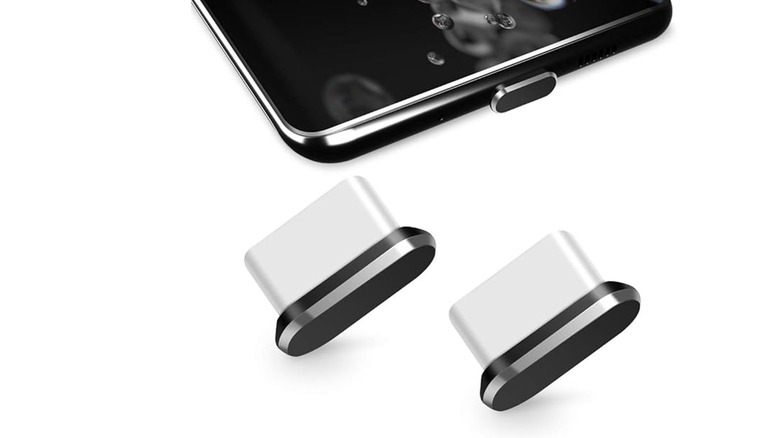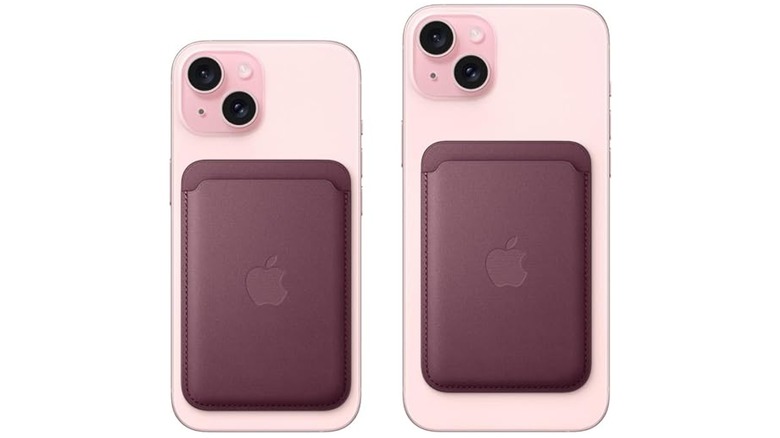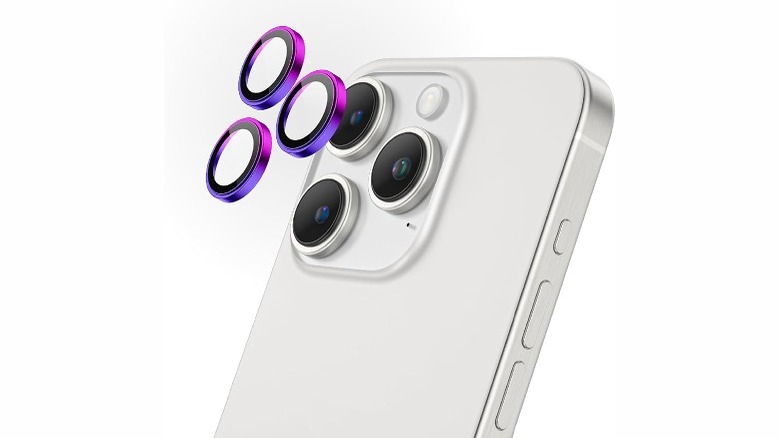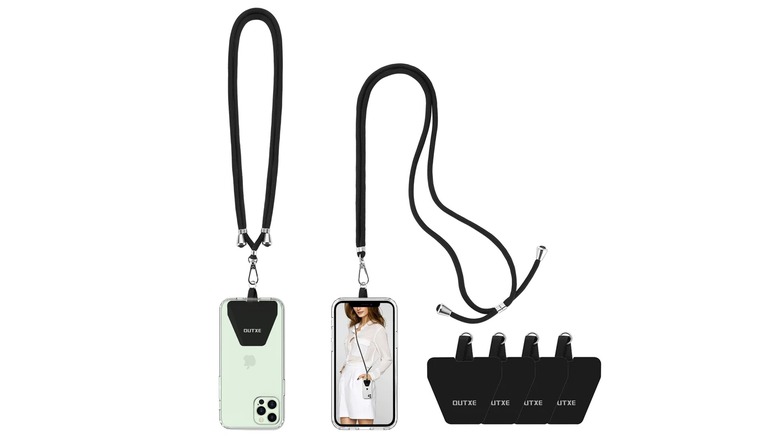10 Ways To Protect Your Smartphone Without A Bulky Case
Whether we like it or not, smartphones have become a part of our daily lives. But one aspect that doesn't sit well with some enthusiasts is the need for a phone case. While your phone case guards against scratches and potential falls, the extra size and weight it introduces can be pretty annoying. Using one also means that the very design that may have lured you into buying the device will end up hidden in your case, so you'll hardly get to see it. This can be a pain for those who value aesthetics and design.
Luckily, phone cases aren't the only line of defense against damage. There are other ways to protect your smartphone against falls without wrapping it in bulky armor. From screen guards to bumpers that shield your phone edges, you can keep your device safe and in good shape, perfect for future use and even for resale.
Screen protectors
Unlike a phone case that goes around your phone, covering the back and edges, a screen protector is placed directly on your smartphone's screen and protects against scratches and cracks. For instance, if your phone falls while the JETech Screen Protector is on, it'll take the brunt of the damage, keeping your screen safe. Screen protectors can also be used with other protective measures like a phone skin, sleeve, or wallet case since they are so light and thin that it's easy to forget you have one on.
It's also important to note that while a screen protector can fend off everyday attacks on your screen, it's not impenetrable. Enough pressure on your screen protector can damage the protector and the screen underneath. Since it only protects your screen, the back and edges of your device can gather scratches or get damaged from a fall.
After some use, you may notice cracks and breaks on your screen guard; you can remove it and replace it with another. Do this carefully to avoid bubbles in your screen protector. If you don't know how, ask a professional to lend you a hand.
Smartphone corner protectors
Corner protectors are pieces of rubber or plastic that fit on the edges of your smartphone and can absorb the impact of a fall and distribute it evenly, reducing the risk of cracks or shattering. This means that if your phone falls on the face or back, there's no need to worry. The corner protectors create a buffer between your device and the ground, preventing direct contact and potential damage.
The key difference between a phone case and a corner protector is that while the former covers your phone's entire back surface area, corner protectors leave this spot free so you can still show off your smartphone brand to your friends. Corner protectors also keep your device light, and you don't need to deal with extra weight from owning a phone case. For instance, you can get the Luxury Corner Edge Pad Lens Protector that doubles as a corner protector and specifically guards your camera lens.
Smartphone sleeve
Try a smartphone sleeve if you want protection that envelopes your entire device. A sleeve completely covers your phone and protects it against scratches and even water, depending on the material it's made of. The sleeve's design slightly differs from phone cases, screen protectors, and corner protectors that only cover parts, not the entire device. Although a sleeve may mean extra protection, you can't use your phone while it's in one. So you'll have to take it out whenever you want to read or send messages.
Sleeves are great for those who like using their phones without any add-ons, but this means your device is at risk till you place it back in. As mentioned earlier, sleeves can be made from leather or silicone with stylish designs like the BIAJIYA Phone Card Holder available on Amazon. They are also great for traveling and can be worn on your belt or kept in a bag or purse.
Smartphone grip
Grips take a different protection angle when compared with a phone case. Instead of wrapping your phone in a layer of protection, grips offer something different – a better way to hold your phone. Some types of grips also double as a makeshift stand. However, it's fair to point out that if your phone falls, grips don't offer much in the way of cushioning the blow.
There are different types of grips. For instance, the Casely Clear Phone Ring is pretty practical and perfectly fits around your fingers while maintaining a secure hold on your device. If ring holders aren't your style, you can get a PopSocket Phone Grip from Amazon that's compatible with MagSafe for wireless charging. Pop sockets can extend when needed and pop right back in place after, maintaining the slim look you get on your phone when you dump a bulky phone case.
While grips might not shield your phone from a fall's impact, having one significantly reduces the chances of dropping your phone in the first place. Besides, they're super handy for propping up your phone, making them perfect for video chats or binge-watching your favorite shows. So, while they're a bit of a trade-off, the added grip and convenience might just be worth it.
Smartphone skins/wraps
From a distance, a smartphone skin or wrap might easily be mistaken for the slimmest of phone cases. However, while both form a protective shield around your device, the similarities end there. A skin is a thin, light protective film placed on your phone, perfect for preventing scratches. Available in various designs, colors, and patterns, skins let you personalize your device's look without the extra weight typically associated with phone cases.
Many smartphone skins are designed with textures that improve your grip on the device, reducing the likelihood of accidental drops. Materials like carbon fiber or textured vinyl used to make skins add to the visual appeal and provide a tactile surface that feels secure and comfortable in your hand. This subtle enhancement can significantly affect day-to-day use, especially for larger phones that can be slippery and harder to hold.
Skins are also pretty easy to install, and you can get it done yourself by following the instructions the manufacturers give alongside the product. For instance, you can install the White Skin Sticker on your iPhone in just four simple steps, and it leaves no glue marks behind if you decide to take it off.
Phone stands
Stands provide an excellent barrier against accidental spills and place your device out of the reach of small children or pets. Compared with a phone case, stands only serve as protection for stationary use, but owning one has additional perks. Their design supports hands-free use and reduces the risk of your device getting knocked down or sliding off surfaces.
There's a stand for every need. For those on the move, car phone holders securely anchor your device to the dashboard so you can navigate with your GPS without compromising safety. For the aesthetically inclined, wireless charging stands elevate your device for better visibility and help maintain a clean and organized workspace by eliminating messy charging cables.
You can also get the Nulaxy Dual Folding Cell Phone Stand and place your phone in landscape mode, perfect for video calls, watching movies, or just as an extra screen for your setup. iPhone users, in particular, will appreciate how iOS 17's standby mode is tailor-made to complement the use of a phone stand, enhancing functionality and convenience.
Dust covers
Dust covers, also known as port covers, are tiny plugs that cover up the open ports on your device, which most phone cases don't protect. For example, the speakers, charging, and audio jack ports are pretty much exposed when not in use, and it's easy for dust and grime to gather over time. If there's enough build-up, it can even lead to charging issues, among other problems.
Dust covers are relatively cheap compared with eccentric phone cases. You can get a Cobee Type C Dust Plug for just $4.79 on Amazon, or you can try out this USB C Dust Plug that also comes with speaker covers to prevent dust and water from getting into your phone.
Dust covers also preserve the slim look of your phone, protecting your device while staying perfectly hidden away from sight. You only need to remove your dust cover when you want to charge your device or plug in headphones. If you use wireless headphones and charge your device wirelessly, there'll probably be no need to remove your dust cover, making it a somewhat permanent feature on your smartphone.
Wallet cases
Some smartphone users already place their cards between their phones and phone cases, but this isn't advisable since it may generate heat. If you're looking for some storage space and protection, a wallet case is a perfect utility piece for you. On one hand, the design and material used to create the wallet case give you a better grip on your device. On the other hand, it also lets you store your ID and Credit cards safely.
The Pelican Magnetic Wallet & Card Holder is a particularly great add-on to your device as its MagSafe design means your wallet case lies firmly on the back of your phone. While you may be worried that a wallet would add the extra bulk you're trying to avoid that comes with a phone case. These cases usually have slim designs and, depending on what you decide to place in them, you probably won't notice much difference in weight.
Camera lens protector
On many smartphones, the back camera protrudes from the flat surface of your device. This makes it easy to scratch or crack your camera lens if care isn't taken. All of which can be devastating because visible breaks on your camera lens may affect the picture quality. Luckily, that's where a camera lens protector steps in to keep your cameras safe.
While your phone case might not protect your phone's camera lenses, camera lens protectors exist for that one specific purpose. Usually made with tempered glass or plastic, a lens protector shields your camera lens from scratches and cracks in case of a fall. They also prevent dust from gathering on your lens, and if you notice any breaks on it, you can replace it, just like you would a screen protector. If you use an iPhone with multiple cameras, you can get the Ferilinso Camera Lens Protector to keep all your lenses safe.
Phone lanyard
There's always a chance your device may fall even when you're using it, and that's where a lanyard comes in. This strap or chord is attached to your phone, and depending on the length, it can be worn across your wrist or neck. With a phone lanyard, you can quickly access your phone without digging into your pockets. This makes it a handy tool if you're wearing an outfit without any pockets or you're at an event where you'll need your phone camera from time to time.
Most importantly, a lanyard offers a secondary layer of security in case your phone slips out of your hands. If you accidentally drop your phone while wearing a lanyard, it won't fall to the ground but lie on your chest — and it makes it harder to steal your device since it's always attached to you, assuming you never remove it from your neck or arm.
A smartphone lanyard is also a great security feature for the forgetful or absentminded, so long as they leave the lanyard attached to their person. If you own multiple smartphones, you can get the OUTXE Phone Lanyard, as it's compatible with all devices.
